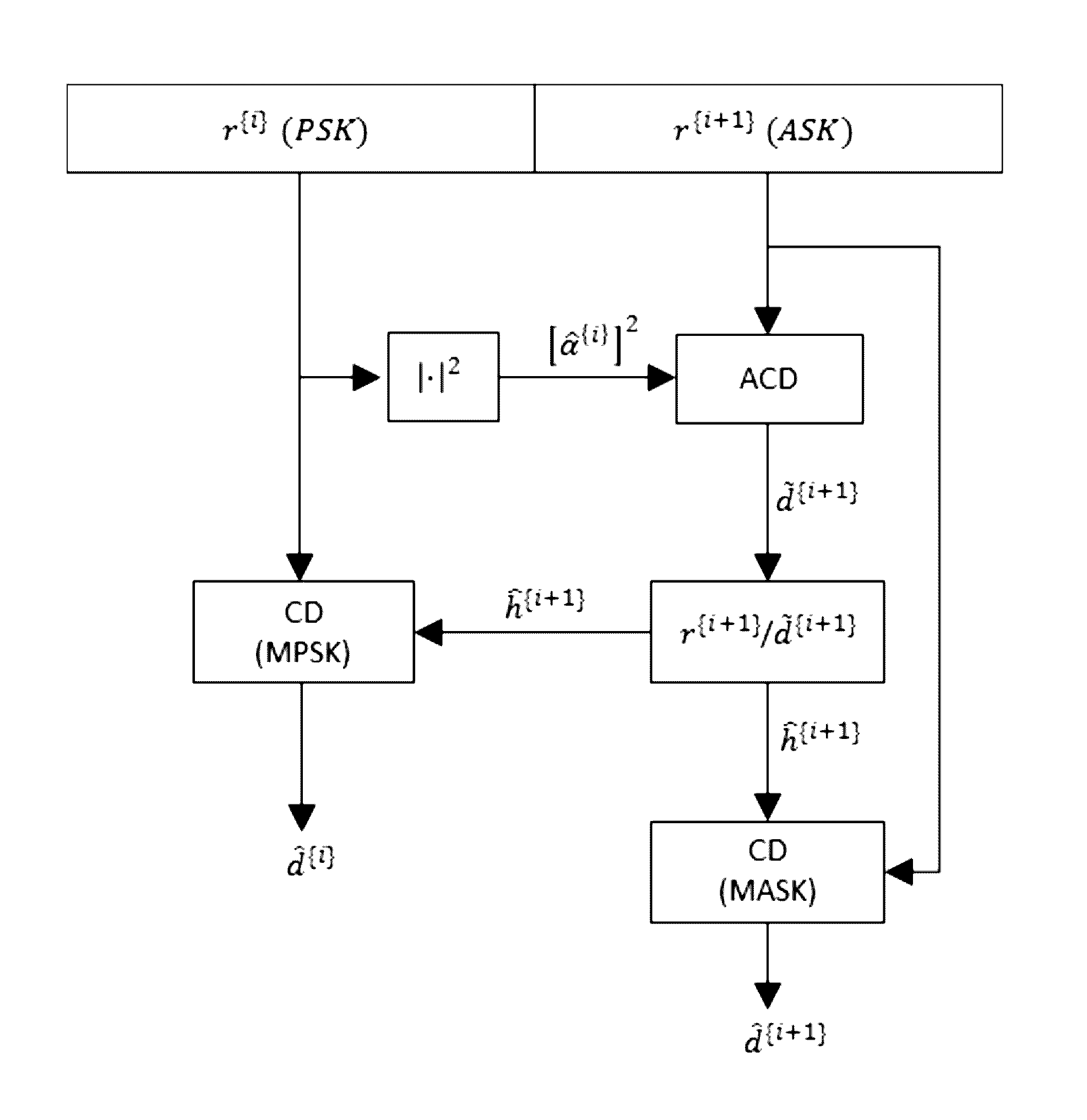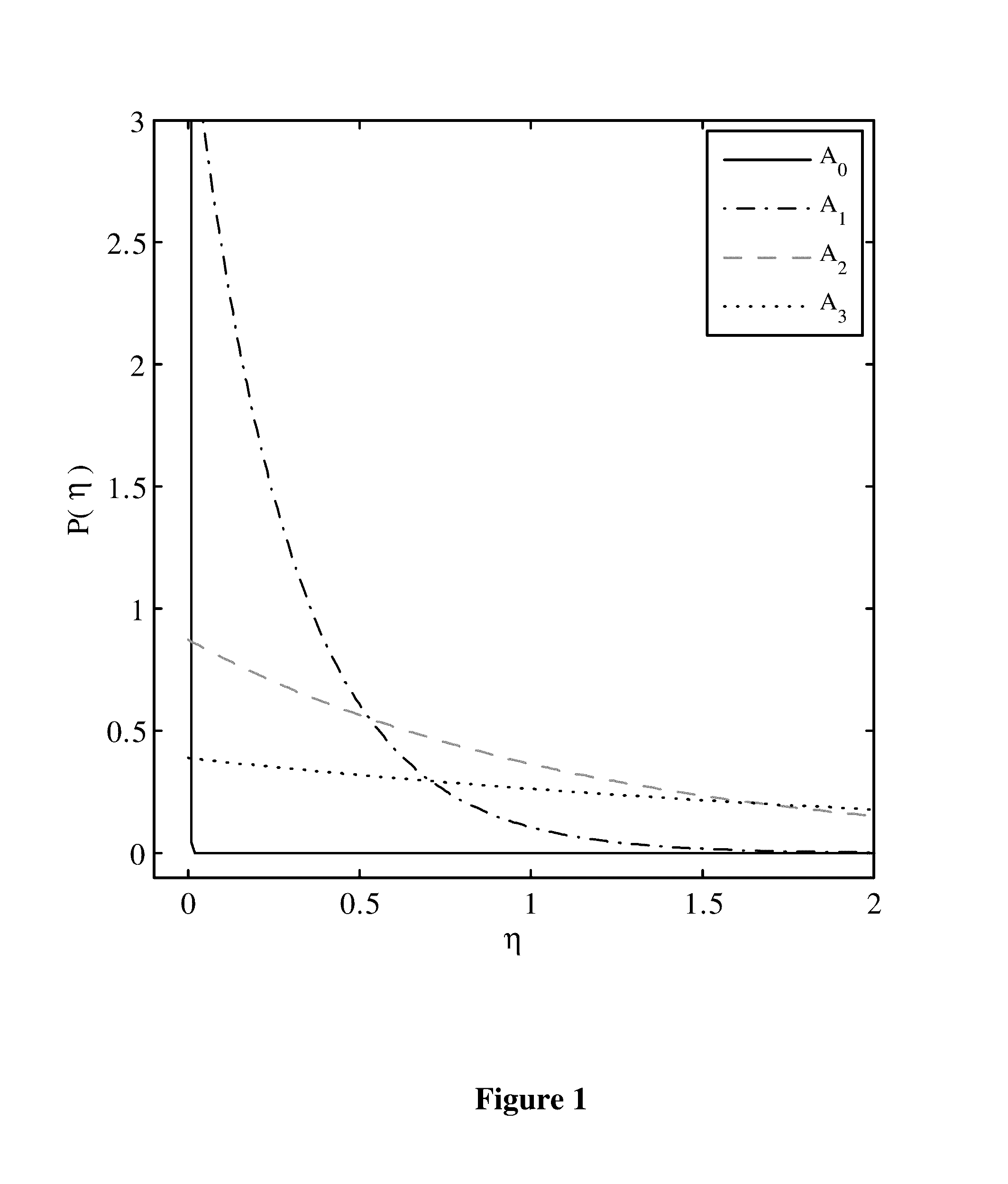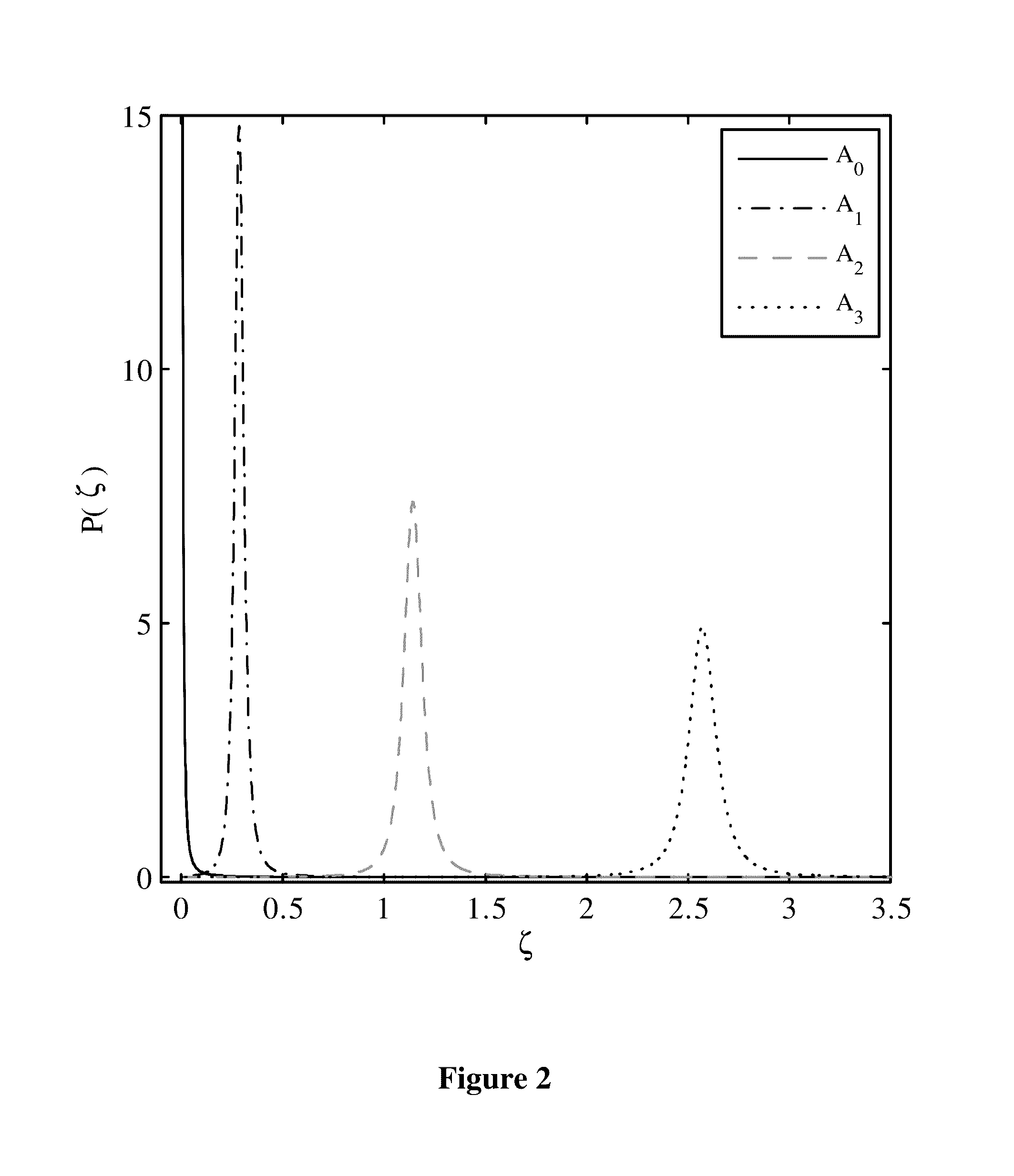Digital communication receiver using partial knowledge of the channel state information
a digital communication and channel state technology, applied in the field of digital communication, can solve the problems of affecting system spectral efficiency, degrading spectral efficiency, and sensitive to phase nois
- Summary
- Abstract
- Description
- Claims
- Application Information
AI Technical Summary
Benefits of technology
Problems solved by technology
Method used
Image
Examples
Embodiment Construction
[0088]MASK Modulation
[0089]In MASK modulation, the baseband representation of the transmitted signal is given
d=Ai, iε{0,1, . . . ,M−1} (1)
where M is the modulation order, the amplitudes Aiε for coherent detection, while for NCD Ai≧0. Without loss of generality, the amplitudes are selected such that Ai+1>Ai. Moreover, the amplitude spacing is usually assumed to be uniform where Ai+1−Ai=δ. Since the average symbol power is normalized to unity, then 1 / MΣi=0M−1Ai2=1. The transmitted amplitudes can be described by,
Ai=i×δ, iε{0,1, . . . ,M−1}, (2)
where
[0090]δ=6(2M-1)(M-1).(3)
[0091]Conventional NC MASK Detection
[0092]Assuming that the information symbols are transmitted over a Rayleigh frequency-flat fading channel, the received signal can be expressed as
ν=hAi+w, iε{0,1, . . . ,M−1} (4)
[0093]where the channel fading coefficient h is a complex normal random variable h˜CN(0, 2σH2) and w˜CN(0, 2σw2) denotes the additive white Gaussian noise (AWGN). To perform NCD, the energy of the rece...
PUM
 Login to View More
Login to View More Abstract
Description
Claims
Application Information
 Login to View More
Login to View More - R&D
- Intellectual Property
- Life Sciences
- Materials
- Tech Scout
- Unparalleled Data Quality
- Higher Quality Content
- 60% Fewer Hallucinations
Browse by: Latest US Patents, China's latest patents, Technical Efficacy Thesaurus, Application Domain, Technology Topic, Popular Technical Reports.
© 2025 PatSnap. All rights reserved.Legal|Privacy policy|Modern Slavery Act Transparency Statement|Sitemap|About US| Contact US: help@patsnap.com



